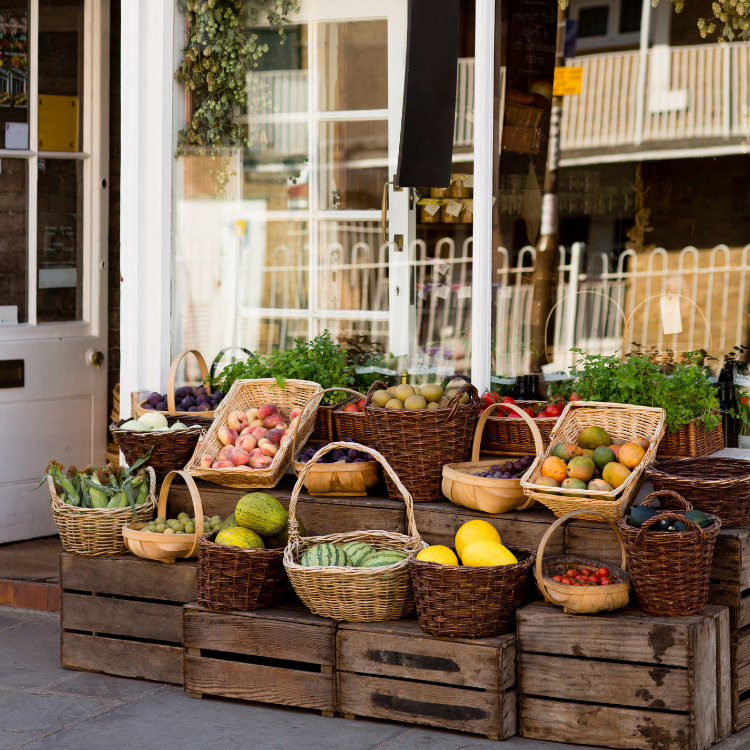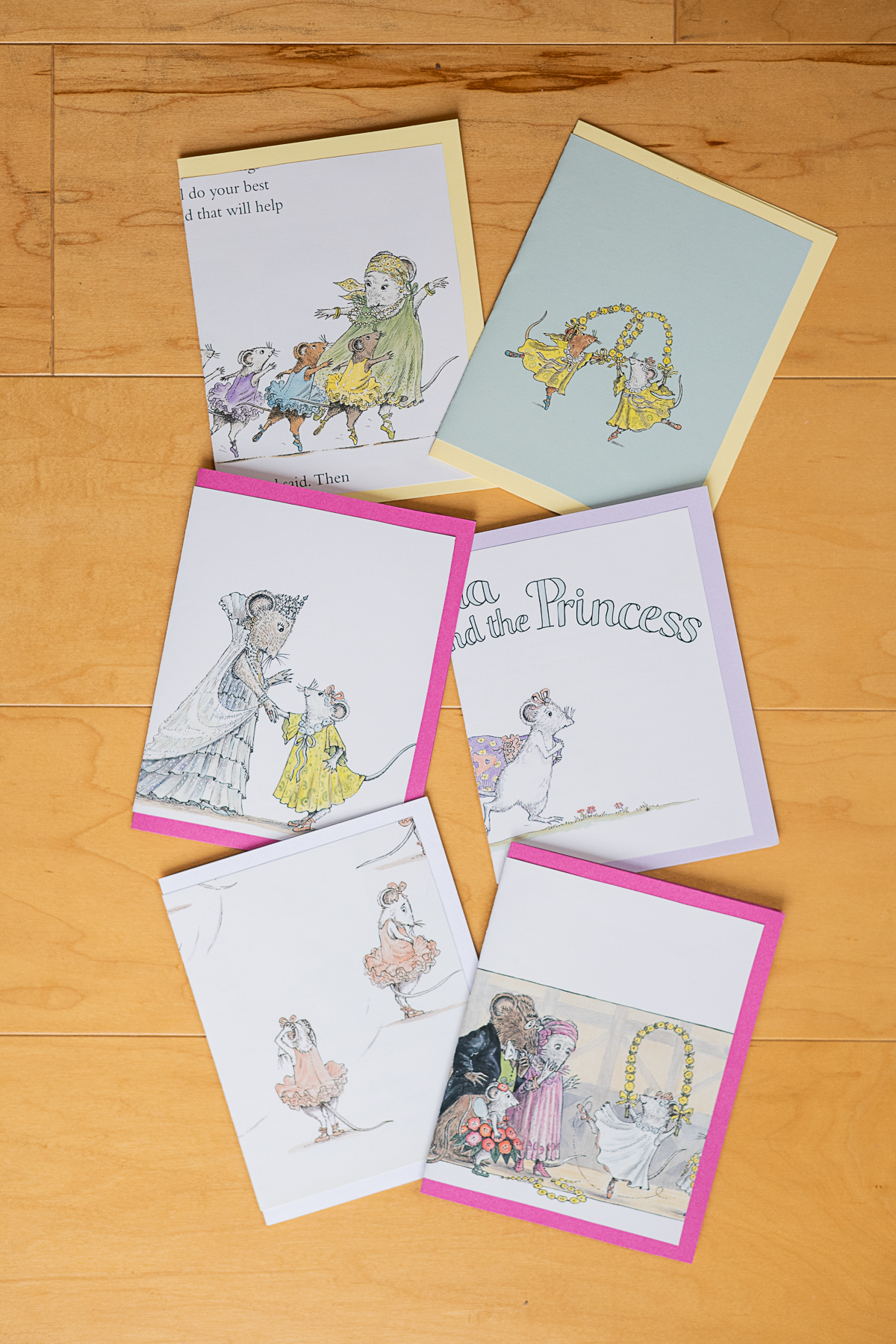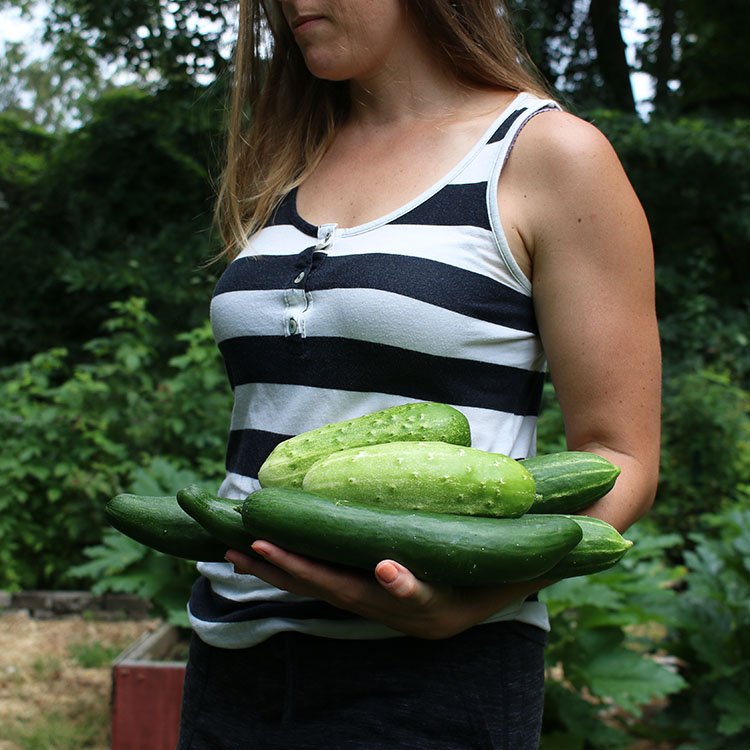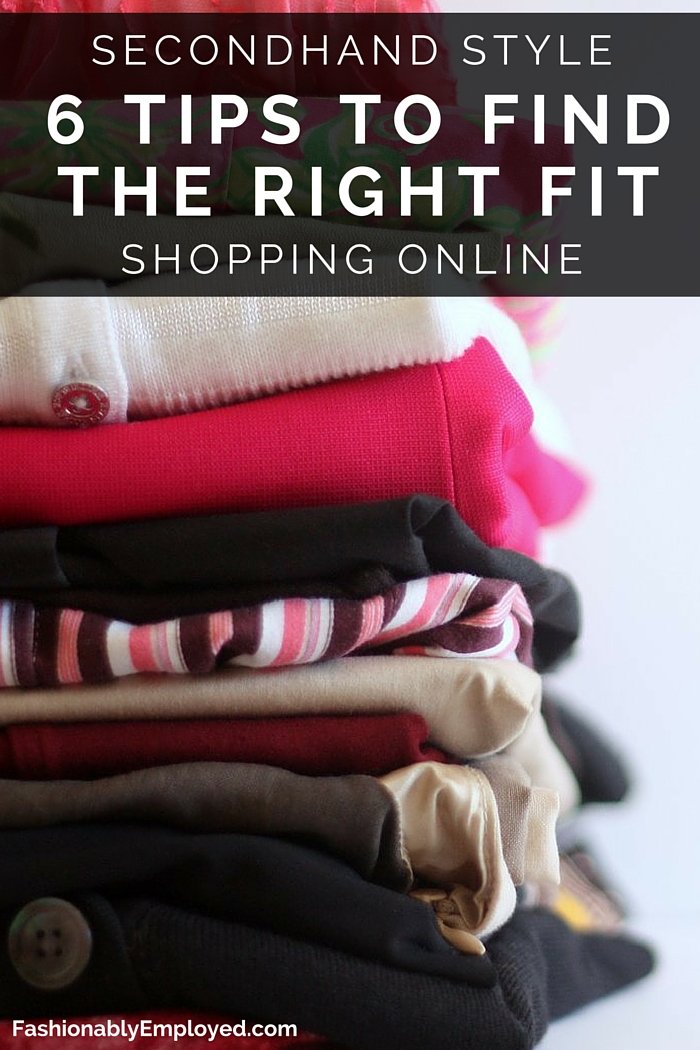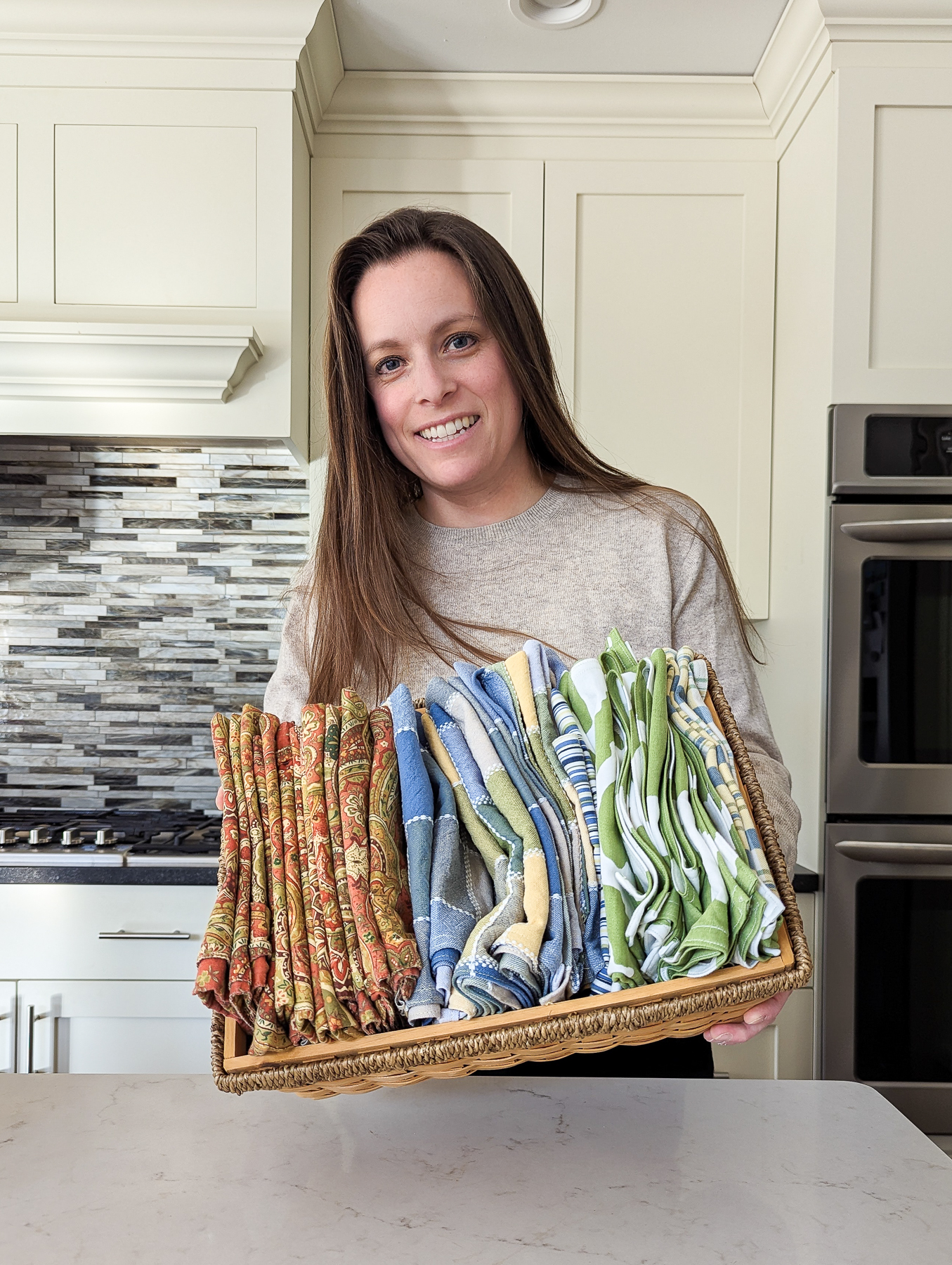Should I Use A Compostable Liner In My Compost Bucket?
Composting can feel pretty complicated. In this Composting FAQ series, we answer all of your questions about composting at home. In this edition of the series, we’re answering your questions about compostable liners in food scrap collection buckets.
Do you really need a compostable bin liner in your compost bucket? Read on for all the details on green compostable liners, brown paper bag liners, and whether or not you actually need them in your compost collection buckets.
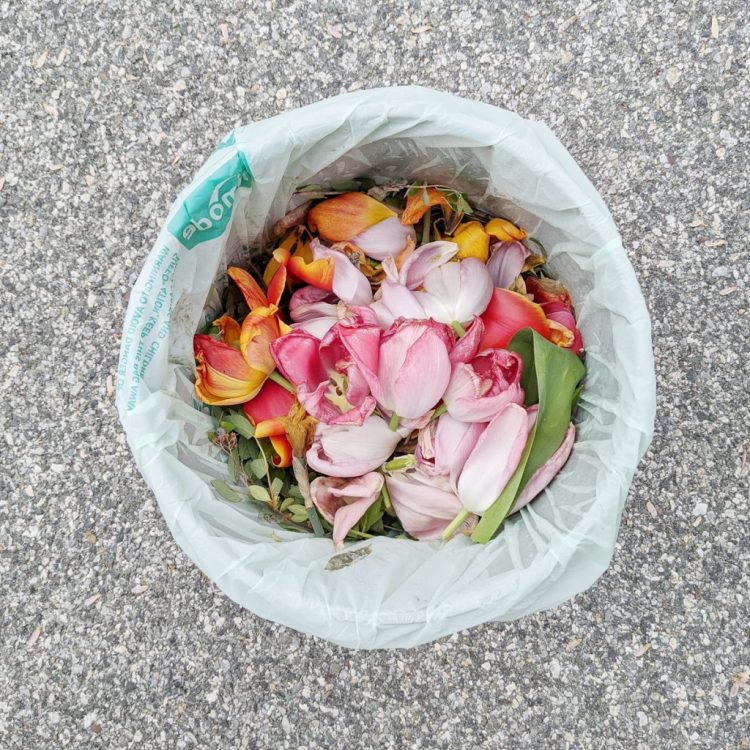
When most people first start composting, the “eww” factor is pretty high. Immediately, new composters invest in compostable liners for their countertop containers and collection buckets if they use a compost pickup service. But are compostable liners really necessary?
For the curbside composting company I run, we require customers to use liners in their buckets. We provide them for free as part of the monthly service fee. We offered both BioBag compostable liners (which are certified to break down in your backyard compost bin at home) and brown paper grocery bags as liners.
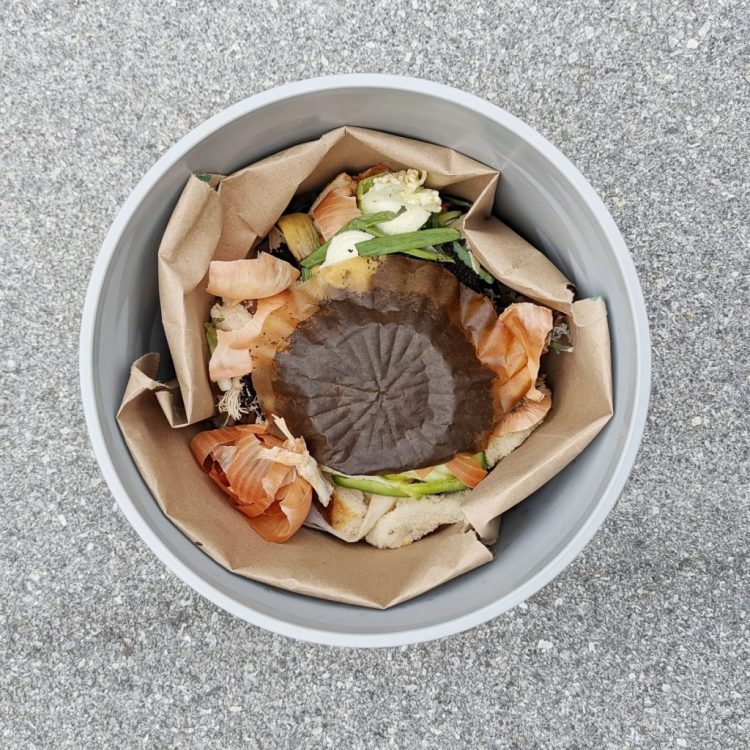
We give our customers 5-gallon buckets to collect their food scraps between service pickup dates. The compostable liners in these compost buckets help to keep the buckets much cleaner and make them easier to empty and clean during our service routes.
Part of the business model for a curbside composting company requires quick and efficient servicing for each customer in order to maintain profitable routes. Thus, the compostable liners benefit our operations in a way that isn’t necessarily important to someone composting at home.
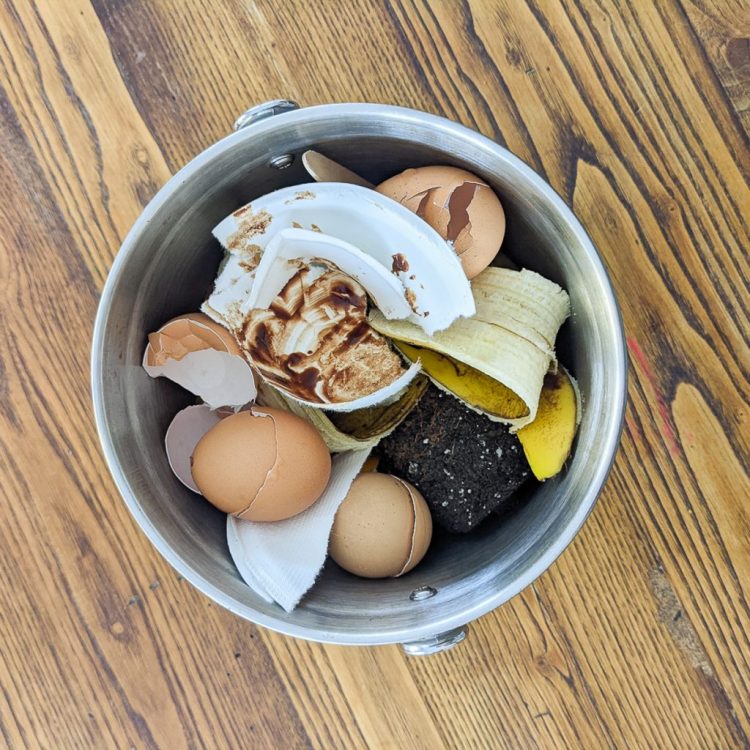
When composting at home, you definitely don’t need a liner in your countertop compost container or in a larger collection bucket. We do not use liners in our countertop compost bucket at home. We simply clean it with soap and water with the rest of the dishes each time we empty the contents into our backyard compost barrel.
Skipping the liners saves money and reduces consumption, ever so slightly, of one more thing that doesn’t need to be manufactured, transported to the store so you can drive it home, or shipped to a warehouse to be delivered to your doorstep.
That being said, liners can significantly reduce the “ick” factor of composting. If liners help someone overcome the gross element of decomposing food, it’s well worth having them compost instead of tossing their food scraps in the trash.
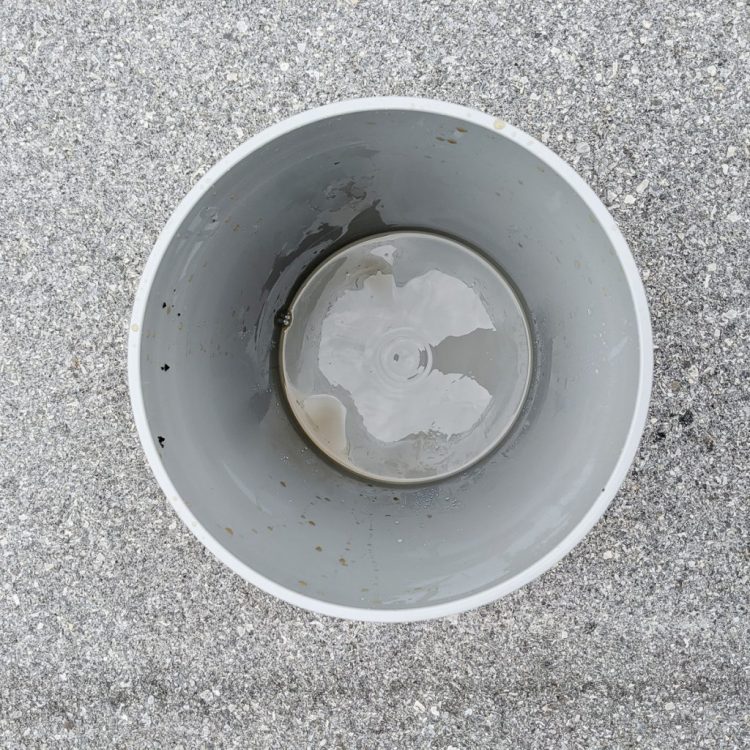
What’s The Verdict on Compost Liners?
If you don’t mind skipping the liner, you don’t need a compostable liner in your bucket. Toss your food scraps into the bucket and you’re set. However, if not using a liner is a barrier to composting for you, then add a liner to make your composting experience easier to manage.
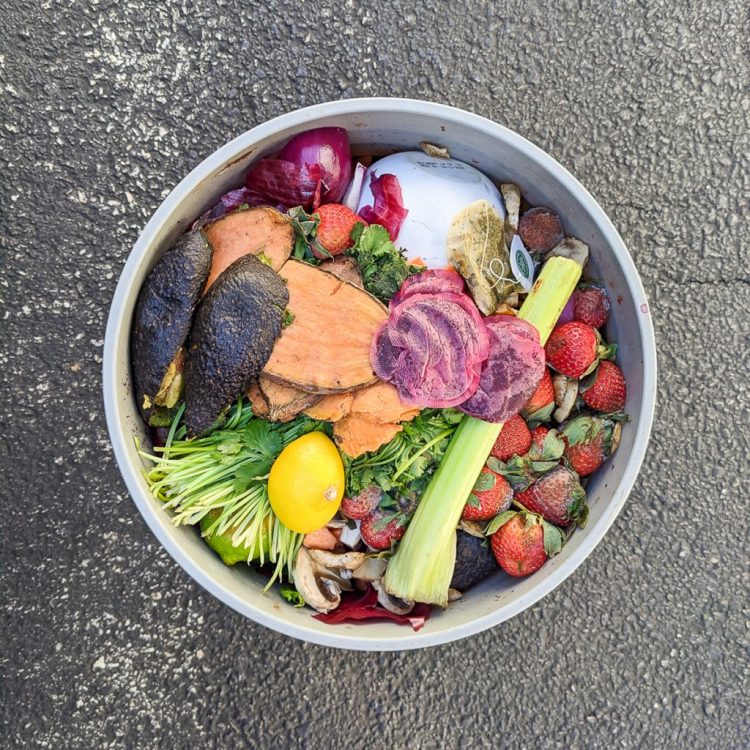
What is the best type of compost bucket liner?
If you choose to use a compostable liner, there are a couple of different options. You can use simple brown paper grocery bags to line your bucket or you can purchase compostable liners (i.e. green liner bags) made from bioplastics.
We prefer brown paper bag liners over bioplastic compost liners like BioBags. BioBags are great, and the company is a wonderful business partner. They support small business compost haulers and are definitely industry advocates.
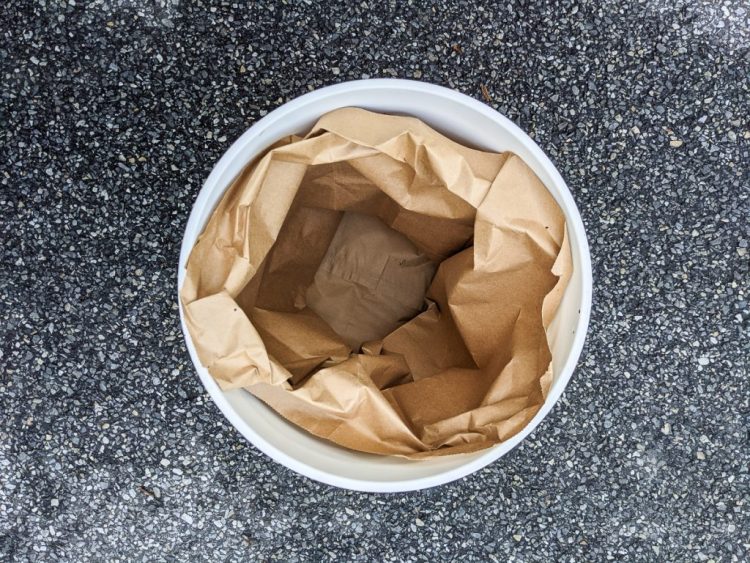
The brown paper bag liners, however, are a bit sturdier in the bucket and absorb more moisture. The brown paper bag is a carbon source, so it complements the nitrogen-heavy food scraps and provides good brown matter for the compost pile.
Related Reading: What Is The Right Ratio of Greens and Browns For Composting At Home?
BioBags, alternatively, are “green matter” like food scraps, as they are made of plant-based plastics. Inside the bucket, buried under heavy, wet food scraps, the BioBags start to break down at the bottom of the bucket.
This is supposed to happen, as the bags are made of bioplastics and designed to decompose among organic matter. But the liner is unhelpful if it’s busted when you empty the bucket.
Additionally, BioBags take quite a bit longer to break down in a compost pile compared to brown paper grocery bags. Further, the brown paper grocery bags generally lend themselves to higher quality compost than compost made with bioplastics like the Bio Bags.
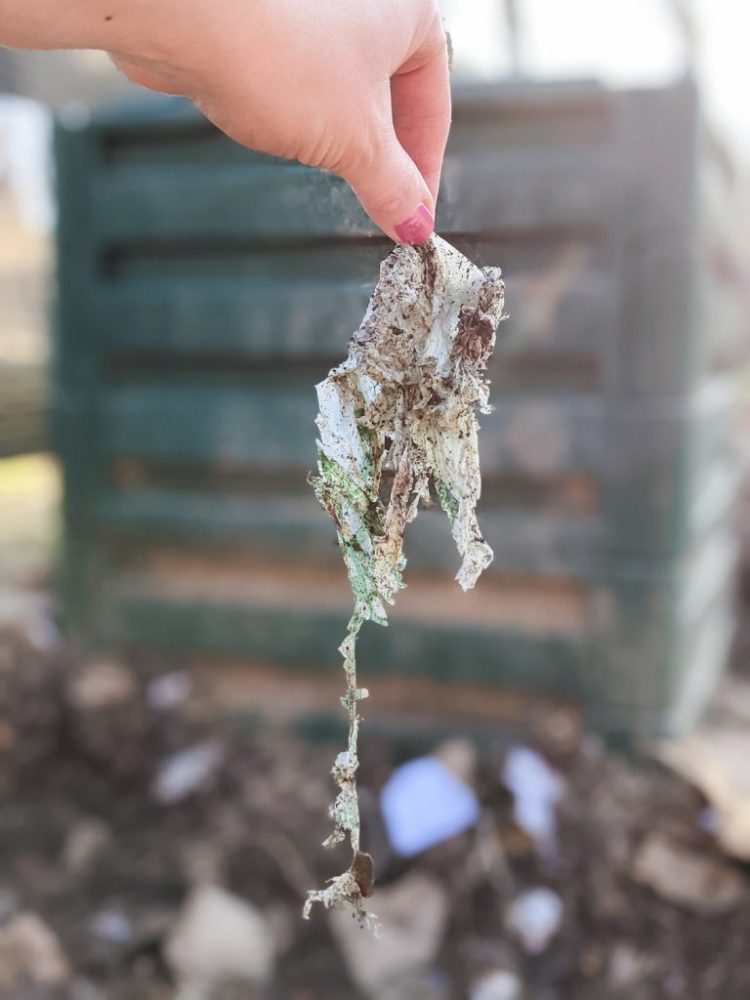
What are bioplastic compostable liners made of?
Green compostable liners are typically made of plant-based bioplastics or resins which are manufactured from renewable crops like corn and soy.
BioBag compostable bags, our favorite brand, are made of starch-based resins from non-GMO renewable crops. Therefore, they break down easily in a properly managed compost system with no issues. The BioBags are BPI certified under ASTM D6400 standard meaning they are compostable at home and in commercial composting facilities.
When looking for compostable liners, it’s worth noting there’s a meaningful difference between compostable and biodegradable. BioBags meet compostable standards in both the United States and Europe. If you choose another brand, be sure to check their certifications to understand whether or not they meet compostable certification qualifications.
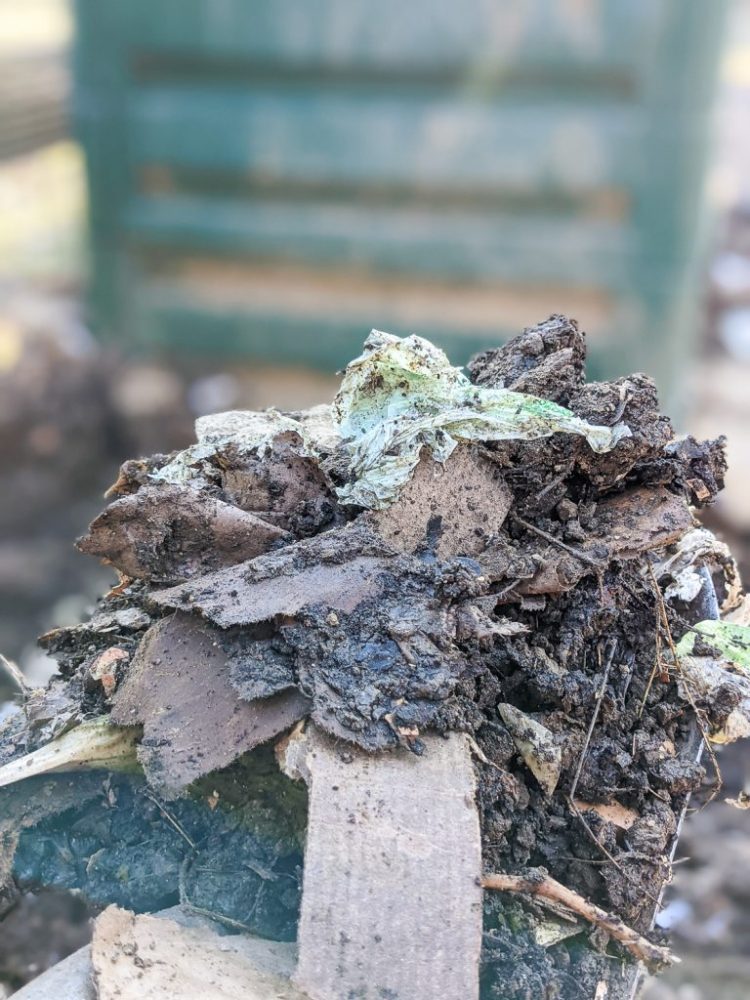
Compostable vs. Biodegradable: What’s the difference?
Many companies claim their bags are either compostable or biodegradable (or sometimes both). There’s a big difference between the two terms, and both terms come with caveats.
What does compostable mean?
Compostable is a regulated term that means something will break down without material safety or environmental concerns within a defined period of time. If you’re looking for plant-based liners that will do the “eco-friendly thing” you’re expecting them to do, look for bags that are compostable.
According to the United States Federal Trade Commission’s Guides for the Use of Environmental Marketing Claims (“FTC’s Green Guides”), an item is compostable if “the item will break down into, or otherwise become part of, usable compost (e.g., soil-conditioning material, mulch) in a safe and timely manner (i.e., in approximately the same time as the materials with which it is composted) in an appropriate composting facility, or in a home compost pile or device.”
In other words, the item should fully decompose just like other organic matter such as food scraps and yard waste. If the compostable item is in a hot and highly-managed industrial or commercial compost facility, it should break down rather quickly. In a passive compost system, the item should break down in less than a year.
What does biodegradability mean?
Biodegradable just means that something will eventually break down into pieces. Everything is biodegradable if you wait long enough, even plastic. In other words, making a claim that a product is biodegradable is an empty claim on its own. Many companies use this word because it resonates with consumers.
The term biodegradable is also used, in some respects, in certain types of certifications (along with other meaningful classifications and definitions). That a product is biodegradable may be part of a larger, meaningful scope of eco-friendly qualities.
But beware that the term “biodegradable” doesn’t carry any weight on its own and is even prohibited from being used in certain states and cities due to its likelihood to be misleading. For example, California prohibits the use of the term “biodegradable” on plastic products entirely and has even filed lawsuits and reached legal settlements with companies that violate these rules.
Further, the FTC’s Green Guides state that in order to claim an item is degradable or biodegradable, the item must “completely break down and return to nature (i.e., decompose into elements found in nature) within a reasonably short period of time after customary disposal.”
It further goes on to state that “It is deceptive to make an unqualified degradable claim for items entering the solid waste stream if the items do not completely decompose within one year after customary disposal. Unqualified degradable claims for items that are customarily disposed of in landfills, incinerators, and recycling facilities are deceptive because these locations do not present conditions in which complete decomposition will occur within one year.”
In short, an item must fully break down within one year into elements naturally occurring in nature, and it must not be an item that is customarily thrown in a landfill, an incinerator, or another facility where such degradation cannot happen within one year due to the design of the facility.
Reflect on that for a moment and consider how many items are labeled “biodegradable” that most certainly won’t end up in a composting facility and almost definitely will end up in a landfill, incinerator, or recycling facility.
tl;dr on Compostable vs. Biodegradable?
Compostable means what you probably think it does. A compostable product will properly break down among other organic matter with proper water and air, and you can eventually feed it to your vegetable garden. Biodegradable means nothing.
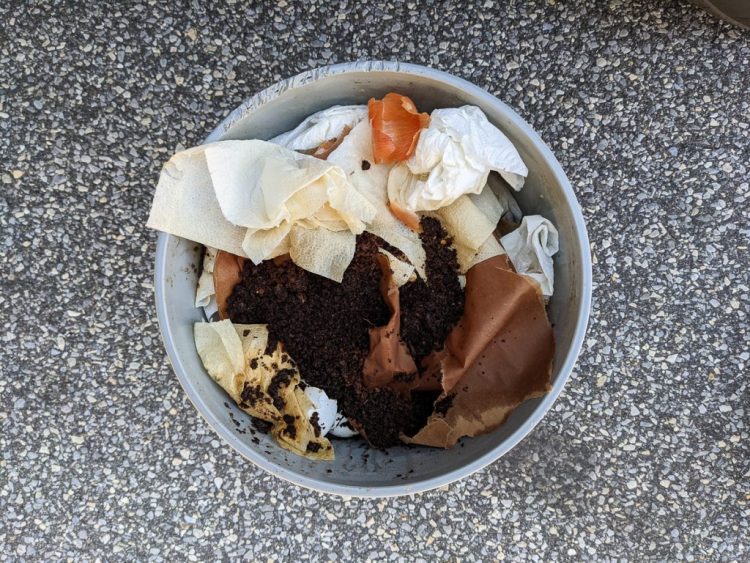
Where to buy compostable liners?
There are many places to buy compost bucket liners, but you may be able to get them for free. We also have a preferred brand if you decide you want green compostable liners instead of brown paper bags.
Brown paper bag liners
You probably don’t even need to buy brown paper bag liners for larger food scrap buckets like the 5-gallon buckets we used to collect food scraps from customers for our curbside composting company. Next time you’re at the grocery store, ask to have your groceries bagged in paper bags. Use these bags as your compost bucket liners.
While we’re typically fans of reusable bags at the grocery store, opting for brown paper bags from time to time to line your compost bucket seems like a fair alternative. Not only do we think brown paper grocery bags function more effectively as compost bucket liners but they also are free.
If you’re looking to use liners for a smaller countertop compost bin, you can use brown lunch bags or order slightly larger and sturdier brown paper bags online.
Compostable bioplastic bucket liners
You can buy compostable bags for countertop containers and larger buckets from a variety of retailers including large online retailers and big-box series. Many companies make and distribute them through large retail channels.
While there are other brands that sell compostable bags like these, we’re fans of BioBags because they make good-quality products, support small businesses in the industry, and are a private, small business as well. They don’t sell their bags directly to customers from their site, but you can use their store locator function to find a retailer near your that sells their products.
How do you use compostable bucket liners?
If you choose to use compostable liners in your compost bins or buckets, simply insert them into the bucket before adding food scraps. If you’re using a brown paper bag, you may need to fold the edges over as shown in the photo below.
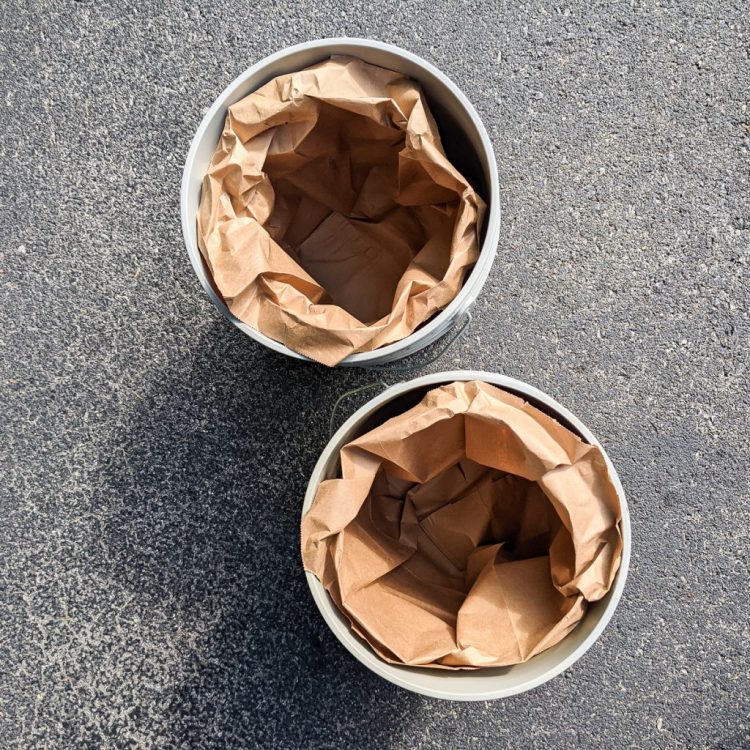
If you choose to use green compostable liners, we’ve found it’s helpful to fold the liner over the edge of the bucket and then use a large rubber band to keep the liner in place so it doesn’t fall into the bucket.
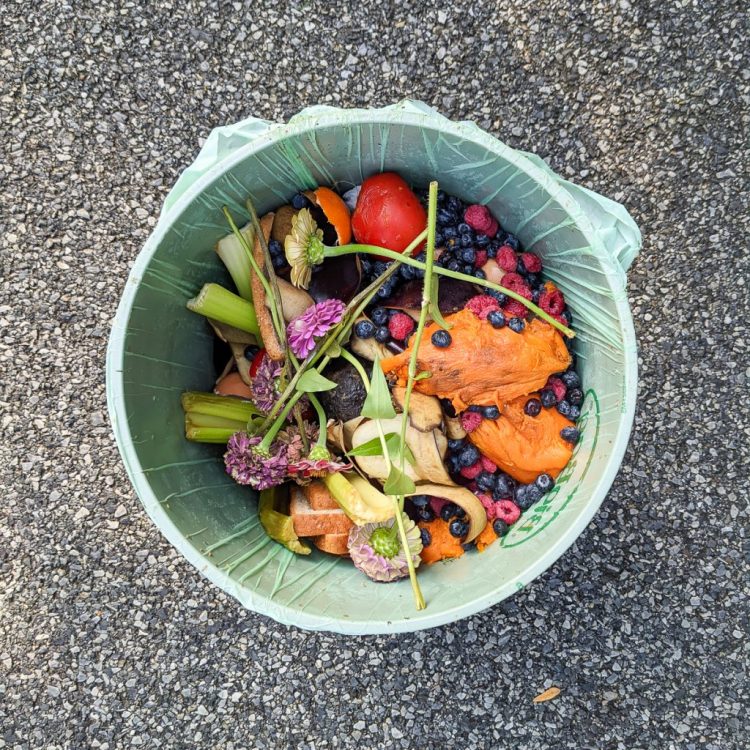
Be sure not to tie compostable liner bags closed. To decompose most effectively, the organic matter inside the bag needs air and needs to be in contact with the microbes in the soil. Tying the compostable bags closed significantly slows the decomposition process and leaves large knots of bioplastics in the pile that take especially long to break down.
Lastly, it’s best to bury the compostable liners. They will decompose much faster when opened and completely covered by soil than if they are sitting on top of the pile.
If you have any other questions about using compostable liners in your bucket, be sure to drop them in the comments below. We’ll do our best to answer them. Do you use liners in your compost buckets?
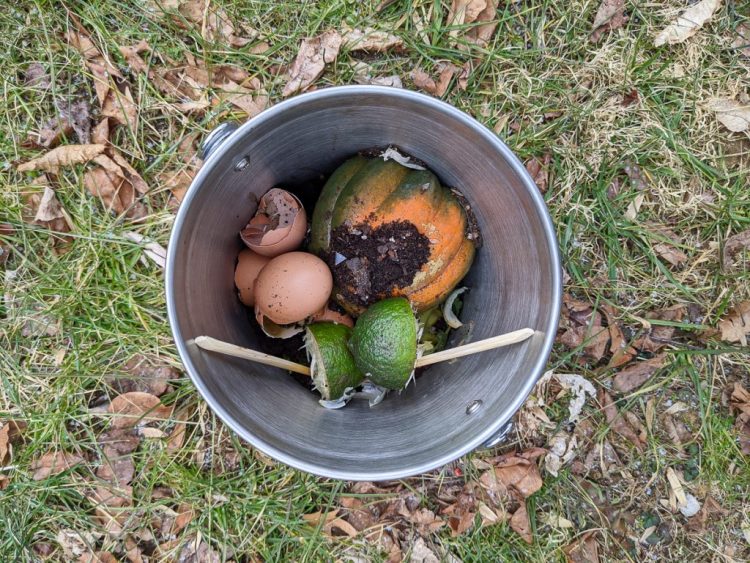
If You Like This Post, You Might Also Like
Eco-Friendly Trash Bags: What To Know and What To Buy
9 Types of Free Compost Browns | The Simplest Fix For Slow and Slimy Compost Bins

Jen Panaro
Jen Panaro, founder and editor-in-chief of Honestly Modern, is a self-proclaimed composting nerd and advocate for sustainable living for modern families. To find her latest work, subscribe to her newsletter, Stepping Stones.
In her spare time, she’s a serial library book borrower, a messy gardener, and a mom of two boys who spends a lot of time in hockey rinks and on baseball fields.
You can find more of her work at Raising Global Kidizens, an online space to help parents and caregivers raise the next generation of responsible global citizens.

